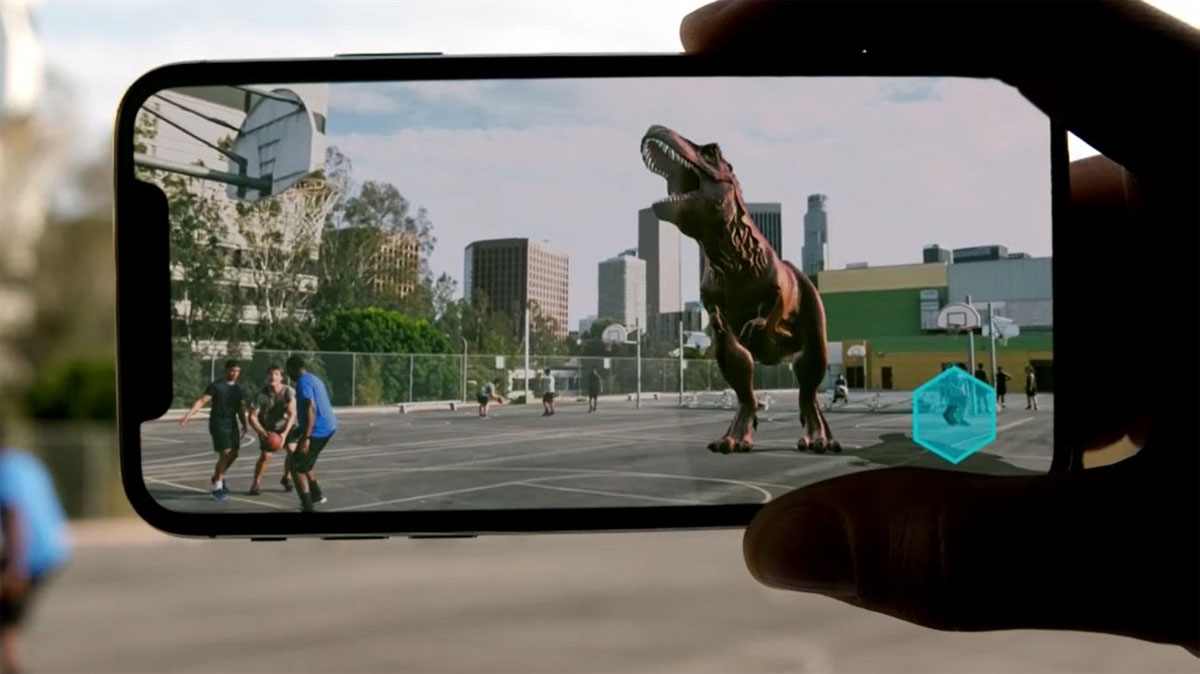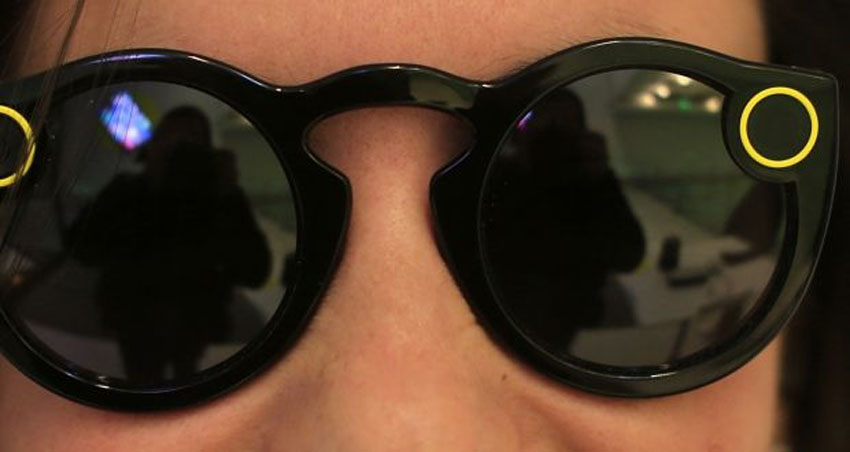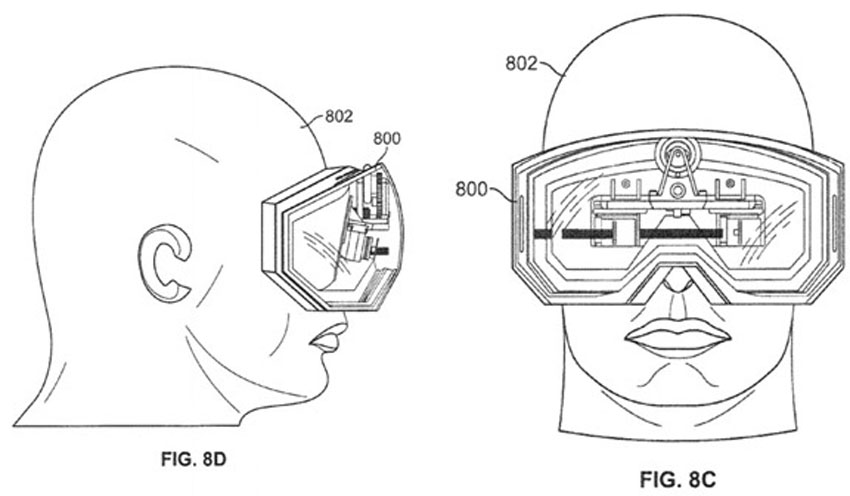Apple is going to release augmented reality glasses. Why is the future behind AR
The richest company on the planet seriously believes that AR is the next major technology that will enter the daily life of users, like the Internet and smartphones before. According to Bloomberg, Apple is developing an AR-helmet, which is due in 2019. The device will work on rOS, a new operating system, and will be able to show video in 360 °, receive calls, transfer us to “virtual rooms” for communication with other users, and so on.

All tech giants are creating their own systems for AR and VR: Google, Microsoft, Facebook, Amazon, and even Snapchat. They say that a new gold mine will soon open here. But will the expansion of reality really entice users? Maybe this is the same useless thing for most people, like homemade 3D, about which we all buzzed at the start of the 2010s? And how many millions of dollars have people already lost on AR?
Reasons for optimism
Each company works on its projects, trying to outperform the competitors and become a monopolist in the AR market. And, of course, this is not just a waste of money. The IT giants have good reason to believe that augmented reality will become popular among millions of users. That's where they get their confidence from:
1. Launch Apple AR Kit.
In June, Apple presented the AR Kit - a platform for application developers with augmented reality. A set of tools allows the most reliable integration of virtual objects into real life. Applications work fine on iOS 11; some of them are specially tailored to the capabilities of the iPhone X. The success of smartphones was largely due to the abundance of interesting applications created by third-party developers with their own ideas. Now Apple wants to repeat this story with AR.

Augmented Reality in iPhone X
')
2. Increasing the number of users interested in technology.
There are enough HYIP projects on the Internet, which receive a lot of money at the initial stage, but then they do not lead to anything. They all follow the same trajectory. At first - a lot of money and a lot of interest. And then, if there is no solid foundation, after a year or two, the number of customers is rapidly waning. With AR and VR this does not happen. Interest in devices is growing every year. In 2016, 150 thousand AR-points were bought, in 2017 - already 340 thousand. According to Statista , at this rate in 2020, people will buy 10.8 million of such points, and in 2022 - 23 million. The popularity of Pokemon Go showed that such a scale is quite possible.
3. AR integration into social networks
Facebook is already working on introducing virtual reality into its platform. Mark Zuckerberg, the head of the company, said that the future is for light points that impose "bonus" objects on the real world. Anticipating the trend, Zuckerberg bought back in 2014 for $ 2.3 billion bought Oculus VR. Everyone around us was sure that he was overpaying wildly, but now virtual reality glasses are one of the most promising technologies, and Facebook is the leader here. Snapchat is moving in the same direction. A year ago, in November of 2016, the company released Spectacles smart glasses, recording what a person sees and sending videos to his friends. The leaders of the social platform are confident that their young users are among those who like the extended reality.

Apple and MLB development: an application that shows the names and statistics of players during a match
4. The future of marketing
They say AR can be a good way to connect with customers. Advertising agencies are already going to go into augmented reality to promote services and products. This is a trillion dollar industry. For advertisers, AR and VR are a dream: ads from which you can’t hide or run away. Advertising in front, advertising on the sides, and all this in high resolution is pumped directly into the brain. No pop-ups in browsers and next to it.

The application from IKEA already allows you to check how the furniture will look in the interior of the apartment
5. Popular mobile applications with augmented reality
These already exist, and they prove the viability of the idea. Pokemon Go, showing Pokemon on the streets of your city. Ink Hunter, showing how a tattoo will look on your body. Flitrar, allowing you to flirt in augmented reality, look at the profiles of potential candidates. It checks if there is a user of the application, and gives you the opportunity to communicate with him. Google Translate is now able to translate text from a photo that the user has just taken. There are already quite a few applications: Ghost Snap, Quiver, Zombie Go, Stack AR. Some are made specifically for the new Apple smartphones.
Already it is clear how wide the possibilities technology opens up for users, and everyone agrees that it has great potential. But...
First pancakes
Many VR glasses have already been successful. Oculus on August 7 released a new set of Rift with Touch controllers, which can be used on any PC with Windows. A lot of games, very positive reviews, and is already quite inexpensive (only $ 399 on Amazon - or about $ 720, if you buy in Russia). Sony successfully sells its PlayStation VR helmet - over a million in just the first four months. It comes only with PS 4 consoles, but at a 60% discount it is sold for $ 286, and most games with it become much more interesting, you really immerse yourself in the game world. HTC Vive has achieved a certain success, even if they don’t talk about it as often as about Oculus. Even very cheap options in which you need to insert a smartphone to get a picture, like Google's Daydream View for $ 99 and Gear VR for the latest Samsung smartphones for $ 30, could find their niche.

But with AR has not yet happened. Google Glass glasses, despite the hype in the media and the support of the tech giant, lasted eight months. The high price, more than $ 1,100, and an “overly geeky look” prevented the product from soaring.
Then, taking into account the competitor's mistakes, with its Spectacles, Snapchat entered the market. She made the glasses much more stylish, tried to sell them as a fashion accessory. Thousands of people lined up on the streets of New York last year to get a device from a special device, “Snap-bot,” which gave them away. The gadget was significantly cheaper, $ 130, but knew how to work only with "Snapchatchy". The first sales were promising, but it quickly faded away. Several hundred thousand points that the company has already ordered, remained unsold. Snap lost more than $ 40 million on unsold Spectacles. She had plans to develop AR to the full in glasses of the second generation, but after such a business failure, their development will most likely have to be canceled.

Apple AR
Two previous attempts to make glasses with augmented reality were not justified for similar reasons. First, users did not like their appearance. Google Glass looked “dumb”, and the Spectacles were made of cheap plastic, so the pictures in them could not boast in social networks. Good word of mouth, which hoped for the company, did not work. Secondly, both products had a very limited set of functions: in a small frame of glasses you will not put a good battery that could fuel a powerful chip. Thirdly, there were not enough loyal users who would believe in the company and buy the device, no matter what, so that in the future it could easily release updates, fix bugs, improve the appearance and so on.

Apple patent
Apple glasses will almost certainly not face such problems. The company knows well how to make the device both attractive in appearance and full of technology. Apple Watch is the best-selling watch in the world, with 35 million sales, and its users are delighted with their appearance. The company waited until the technology reached the desired level, and it would not be difficult to place the necessary iron in a small helmet or in glasses. If Google Glass “rolled out” with a small set of programs from third parties, then with the AR Kit by the time of release of their device, Apple will already have a ready ecosystem with a lot of applications tested on the iPhone and iPad. It remains only to convince users to put their old devices and put on a new headset. Fans of Apple, as a rule, are very enthusiastic about accepting new devices from their favorite company. There is no need to worry about the presence of a sufficient number of early adopters in this case.
According to Bloomberg, Apple’s planned headset should have a built-in display, a new chip, and a specially created operating system, which so far inside the company is called rOS (“reality operating system”). That is, the device will be closer to the Oculus Rift than to the Gear VR, it will not rely on the smartphone as its engine or screen.

Potential iGlass concept
Apple engineers are reportedly exploring several ways that users can control the headset, including head movements, touch panels and voice control via Siri. A headset prototype has not yet been created, and according to rumors, designers use the HTC Vive VR with an iPhone X screen to test the potential of AR technology. The team also develops applications — for navigation, viewing 360 ° videos, attending virtual meetings, and sending messages.
The main proponent of AR remains Apple CEO Tim Cook. It was he who insisted that AR elements be built into the iPhone X. In a recent interview, he said:
I think this is a very big idea, like a smartphone. The smartphone must be for everyone. It seems to me that augmented reality is the same caliber, it is something huge. It will change the way we use technology forever. It will improve many lives, and still entertain us well in the process.
Apple is working on ambitious graphics. The goal now is to have a ready-made AR device by 2019, with the possibility of delivering it to consumers in 2020. The company is confident that its device will not repeat the fate of Google Glass and Snap Spectacles, and it will turn out to create the first truly popular and in-demand headset with AR.
PS
To order VR headsets and other cool devices in the US, there is Pochtoy.com . We have the best shipping service from America: from $ 8.99. And if you register here and enter the GEEKTIMES code, you will immediately receive $ 7 to your account.
Source: https://habr.com/ru/post/370995/
All Articles